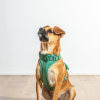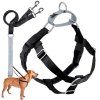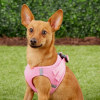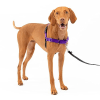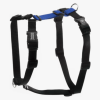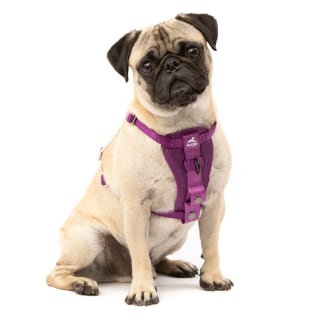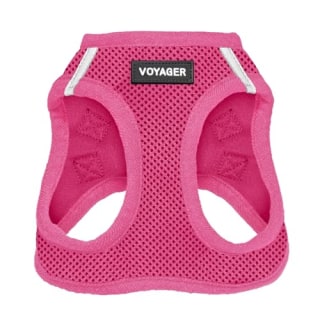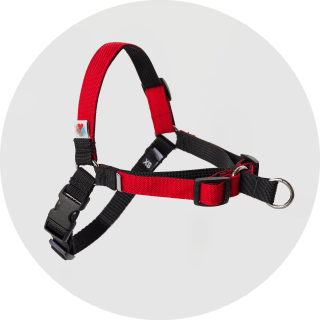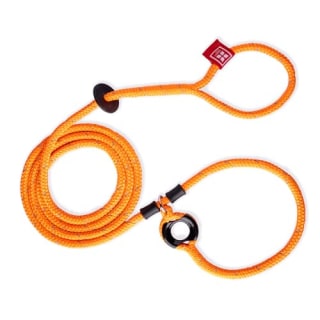For some, one of the best parts of having a dog is taking them on walks. Not only does it allow you to get some exercise (dog owners walk an average 22 minutes longer each day than non-dog owners, according to a study from BioMedCentral’s Public Health Journal), but it can also be vital to your dog’s overall health. But if your dog constantly tugs or lunges while walking with a traditional collar and leash, a harness may be a good alternative. They can help disperse the pressure caused by a pulling leash, which can be better for your dog’s neck and help prevent them from choking, experts say.
If you’re looking to invest in a harness for your pup, I spoke to veterinarians and dog trainers about the different types of harnesses available, the benefits of using each one and how to find the best fit for your dog.
When shopping for the best dog harness for your dog, here’s what experts recommend looking for:
- Harness type: There are two main types: back-clip harnesses (you clip the leash in between your dog’s shoulder blades), and front-clip harnesses (the leash attachment is in the front). Back-clip harnesses are usually more comfortable for most dogs, while front-clip harnesses are best for dogs that pull or lunge. Some harnesses have both clip points that you can easily adjust if needed.
- Size and fit: Different breeds and mixes have their own unique body type, so look for a snug but comfortable fit where you can fit two fingers under the straps, says Dr. Abel Gonzalez, a veterinarian and the clinical director at Dutch, a pet telehealth company. Consider a harness that’s adjustable and has padding to prevent rubbing, he says. Also, look for a size guide, which will indicate the manufacturer’s recommendations for the best fit for your pup.
- Durability: Think of the harness as a seatbelt: You may not need it every walk, but when you do, it can prevent injury. “Even small frays can fail in the one moment you really need control, like when an off-leash dog approaches,” so make sure you check it regularly, says Gonzalez. Make sure the harness is made of strong durable materials like nylon, polyester and neoprene, experts say.
- Ease of use: I considered products that are more intuitive to put on your dog, whether that means having a separate color for the belly strap (so you know it goes on the bottom), or a tag that indicates where your pup’s head goes. Consider harnesses that are machine-washable, so they’re easier to clean.
Want more from NBC Select? Sign up for our newsletter, The Selection, and shop smarter.
Below, I compiled expert-recommended back- and front-clip dog harnesses. In line with our experts’ guidance, each of the following dog harnesses are available in multiple sizes and include a size guide to find the one that’s right for your dog’s size and weight.
Best overall
“This harness looks good, is well constructed and comes with really nice matching leashes,” says Robert Haussmann, a certified dog trainer and co-founder of dog training service Dogboy NYC. You can attach a leash to the harness in three spots — the neck, lower back and chest — for your preferred control method. I’ve used this harness and matching leash set for my 7-year-old havanese and bichon frise mix, Bella, for over five years. The material is super soft, stretchy and easily adjustable, which has come in handy as Bella has gotten older. You have to slip the harness over your dog’s head instead of clipping it around their body, which can take some getting used to; it requires a little wiggling at first, but after you do it a few times, you get used to it.
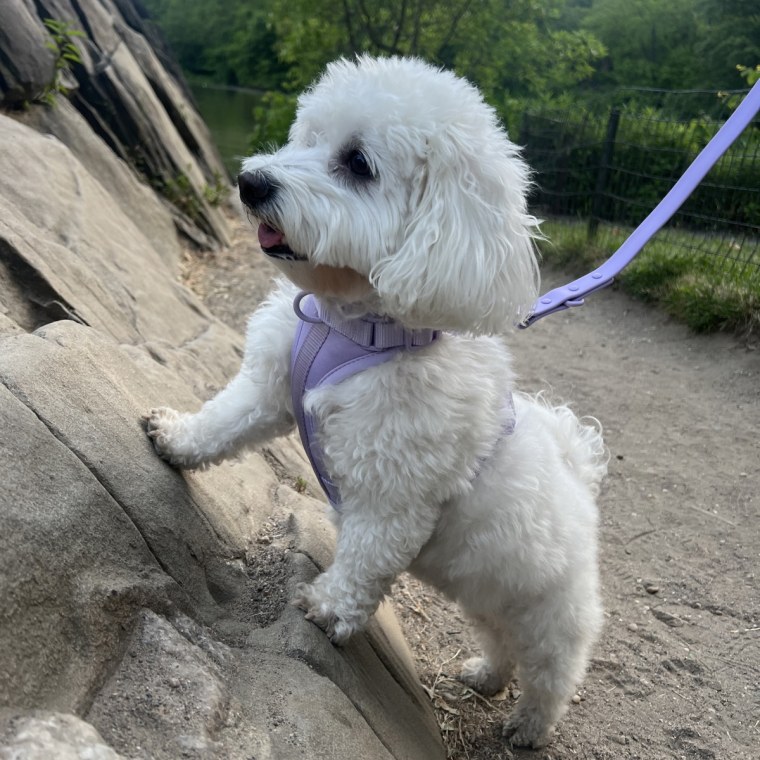
NBC Select reporter Zoe Malin’s puppy, Mabel, is also a fan of the Wild One harness: “I bought it when she was about three months old and four pounds — I got the extra small size, but I still had to tighten the adjustable straps as much as possible so it fit her,” she says. “Now that she’s nine months old and nine pounds, I’ve loosened the straps a bit, and the extra-small harness fits her perfectly. It grew with her just as I hoped it would.” Malin loves that the harness is padded across the back and belly, which makes it seem extra comfortable for Mabel. Plus, there’s three leash attachment points, so you can latch it to a car seat, stroller or leash.
You can choose from multiple trendy colors, plus upgrade to a Walk Kit with a matching leash and poop bag carrier.
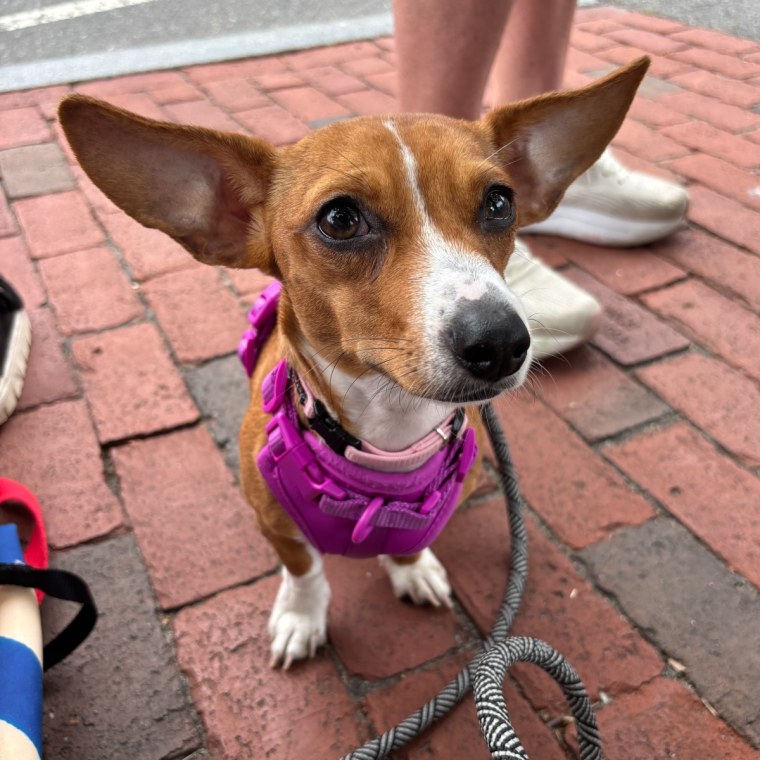
Best crash-tested
If you’re looking for a harness to use both on walks and in your car, this Kurgo harness is sturdy and well-made, according to Haussmann. In addition to its padded chest plate and steel hardware, this harness has a 10-inch seatbelt tether that’s been crash-tested for dogs up to 75 pounds, and it’s compatible with any vehicle seatbelt system, according to the brand. You can attach it to a leash both at the front and the back.
Best no-pull harness
Haussmann recommends this front-clip Petsafe harness because it’s the “easiest to find at pet stores and comes in half sizes to find the right fit,” he says. It has a patented loop design that puts gradual pressure on your dog’s shoulders to help you safely redirect their focus and prevent them from pulling, according to the brand. “If a dog tries to pull, it gently turns them back toward you, reinforcing training rather than letting them drag forward,” says Gonzalez. This is another harness I regularly use with Bella, who tends to jump on other dogs and people — it helps her stay on the ground and nip any jumping or pulling in the bud, in my experience. The belly strap is also a different color than the rest of the harness, so you can see whether you’ve put it on correctly.
Best for small dogs
Look for a lightweight mesh or breathable harness if you have a small dog, a younger puppy or a pet that’s previously suffered a neck injury, says Dr. Natalie Marks, a veterinarian at VCA Blum Animal Hospital in Chicago. This option is available in a range of smaller sizes and is made from soft, comfortable and breathable mesh. It also includes reflective bands around the chest and sides for nighttime walks.
Best breathable
“I call this ‘harness pants’ because your dog steps into it like you would step into a pair of pants,” says Malin. “It’s very easy to quickly put on and take off your pet — my family uses it for our four-month-old puppy Daisy, who’s very squirmy, and it works great.” You can secure it on your pet in three ways — a hook and loop fastener, a buckle and double D-rings — so you don’t have to worry about it randomly coming apart. The harness is made from lightweight and breathable mesh fabric, so it’s great for warmer climates.
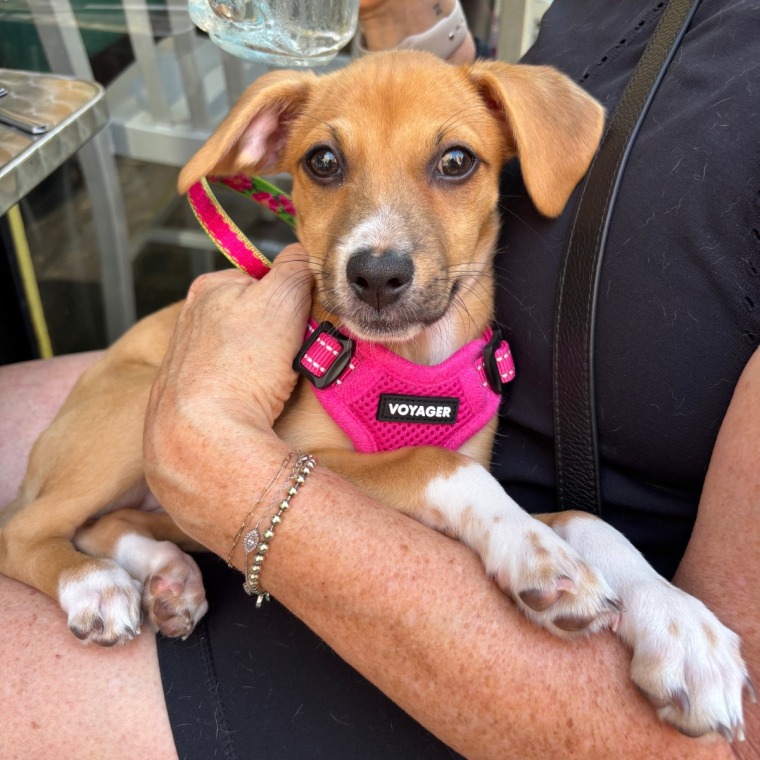
Best for training
If you’re in the thick of training, the no-pull Freedom Harness will tighten around the dog’s chest to reduce tugging and allow you to steer them as needed. “This harness has both a front and back leash attachment, and it even comes with a leash,” says Haussmann. It also includes a comfortable, velvet-lined chest strap that helps prevent it from chaffing your dog’s skin, he says. The harness is designed to fit dogs weighing between 14 pounds and 250 pounds, according to the brand.
Best durable
Wildebeest’s no-pull dog harness, which Haussmann says is both functional and durable, has four adjustable straps along with a single buckle to easily get it on or off, according to the brand. It’s made from multiple layers of nylon and webbing for durability, plus has reflective details for night visibility, according to the brand. The harness’s front-clip design has a strap that gently tightens around the chest to help control your dog’s pulling.
Best adjustable
This harness comes recommended by Gonzalez because it’s highly adjustable, lightweight and great at preventing rubbing and chafing, he says. Haussmann is also a fan due to its six adjustment points and multiple leash attachment points. Since Haussmann is primarily an urban dog trainer, he uses this harness to help reverse unwanted behaviors, like pulling or lunging. Plus, it allows your dog to have full range of motion and won’t cause choking or chafing, according to the brand.
Best escape-proof
The Harness Lead Leash is great for dogs who tend to be a flight risk since they’re fairly escape-proof and effective at gently controlling pulling or dragging back, says Haussmann. Though this is a back-clip option, it works similar to a no-pull harness in that it uses the dog’s own pressure to gently tighten around their chest and discourage tugging in the process, according to the brand. The durable, double-braided polyester harness comes in three sizes to fit dogs anywhere between 14 pounds and 200 pounds, according to the brand.
In addition to determining whether a front- or back-clip harness is best for your dog (more on that below), it’s important to pick one that is proportionate to your dog’s size. “A harness that’s too tight can be painful, cause skin abrasions and create a negative association with walking in general,” says Marks. A harness that is too loose, on the other hand, can prevent it from serving its intended purpose and let your dog wiggle right out of it, says Alison Creighton, a registered veterinary technician at VCA Lakewood Animal Hospital.
A general rule of thumb to determine whether the harness fits properly is that you should be able to get two of your fingers between your dog’s body and the straps of the harness, according to Haussmann. “Be sure the front strap isn’t too low and hanging, or that it’s not rubbing too much under their armpits,” he says.
Harness manufacturers usually include a size guide and instructions on how to properly measure your dog for the correct fit. “How a harness fits will vary depending on the brand and type, so it is very important to follow measurement guidelines for each individual product,” says Creighton.
At NBC Select, we work with experts who have specialized knowledge and authority based on relevant training and/or experience. We also take steps to ensure all expert advice and recommendations are made independently and without undisclosed financial conflicts of interest.
- Dr. Abel Gonzalez is a veterinarian and the clinical director at Dutch, a pet telehealth company.
- Robert Haussmann is a certified dog trainer and co-founder of dog training service Dogboy NYC.
- Dr. Natalie Marks is a veterinarian at VCA Blum Animal Hospital in Chicago and certified veterinary journalist.
- Alison Creighton is a registered veterinary technician at VCA Lakewood Animal Hospital.
I’m an updates editor at NBC Select who has covered a variety of pet topics since 2021. For this article, I spoke to a veterinarian, a veterinary technician and a certified dog trainer about how to shop for dog harnesses. I compiled their recommendations for the best harnesses to consider, as well as NBC Select editor favorites that we use for our own pups.
Catch up on NBC Select’s in-depth coverage of tech and tools, wellness and more, and follow us on Facebook, Instagram, Twitter and TikTok to stay up to date.

